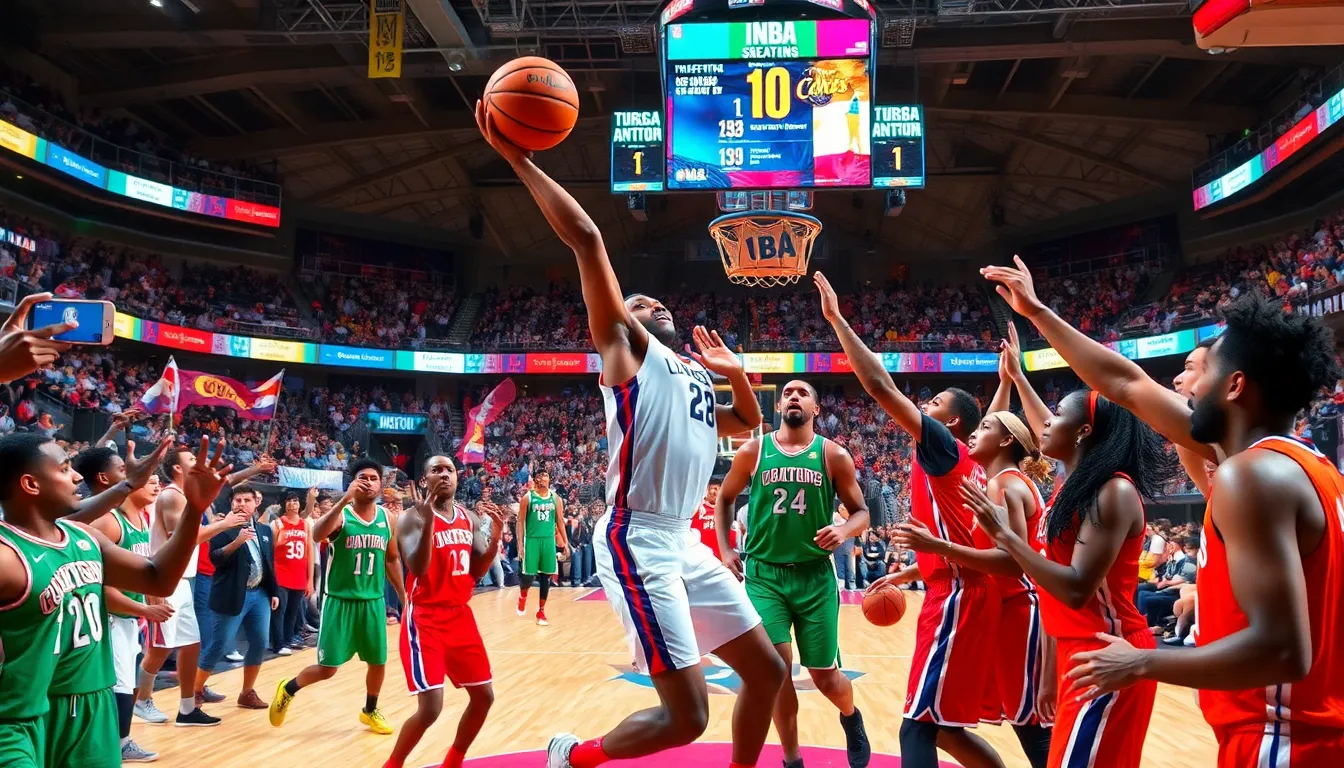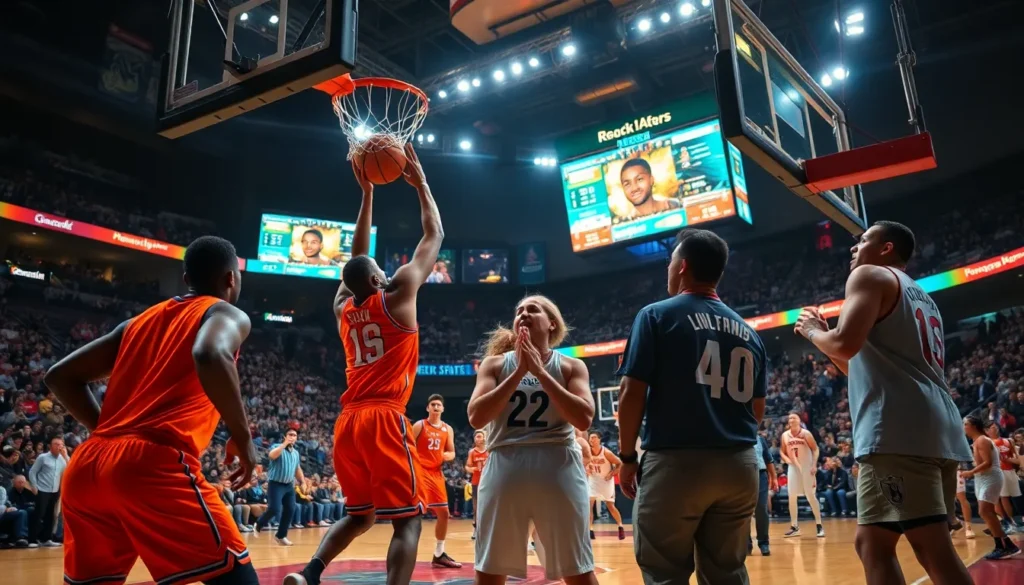Table of Contents
ToggleIn the dynamic landscape of the sports industry, recent developments in competitions and innovative financial structures like plateau deals have captivated stakeholders and audiences alike. These changes are not just altering the way sports are played but are also reshaping the economic framework that supports it. This article delves into the latest updates in sports competitions, the rise of plateau deals, and their collective impact on the athletic world.
Overview of Recent Developments in Sports Competitions

The world of sports competitions has witnessed significant transformations recently. From major league restructuring to the introduction of novel competition formats, there’s a palpable shift in how sports are organized and presented. For instance, leagues are increasingly adopting tournament-style formats to enhance fan engagement and increase viewership. Notably, in basketball, the NBA’s introduction of in-season tournaments aims to elevate the competitive spirit throughout the year. Also, traditional events are also embracing technology, with the use of virtual reality and augmented reality enhancing spectator experiences by providing immersive viewing options. These developments illustrate a clear pattern: sports organizations are prioritizing innovation to retain and grow their fan bases.
The Rise of Plateau Deals in Sports
Plateau deals are becoming a common term in the sports world, representing a shift towards sustainable financial models that provide guaranteed compensation to athletes irrespective of performance variability. This trend is rising due to the growing pressure on organizations to create fair compensation strategies amidst competition for talent. Unlike traditional contracts that are heavily performance-dependent, plateau deals offer athletes a baseline salary that remains unchanged, giving them stability and security.
This financial structure gained traction as organizations realized the importance of retaining top talent. High-profile discussions around this model have occurred in various sports, including soccer and American football, where unpredictable performance metrics can heavily influence earnings. As teams seek to attract and retain elite players, plateau deals provide a more alluring option that represents both a commitment to athletes and an innovative response to industry challenges.
Key Competitions Impacted by Plateau Deals
Several high-stakes competitions have already begun incorporating plateau deals into their structures, affecting the way teams approach player contracts. For example, in Major League Soccer (MLS), clubs are increasingly looking at plateau deals to keep their star players engaged without the financial pressures that come with fluctuating performance metrics. This addition has made it easier for teams to manage their salary caps while ensuring player satisfaction.
Likewise, in European rugby, certain clubs have adopted plateau contracts for their players, especially during seasons where injuries and form could greatly affect earnings. By stabilizing income, teams can build more robust squads, reducing the financial impacts on players who may be sidelined due to no fault of their own. This strategic shift is indicative of a broader trend where the well-being and performance sustainability of athletes are prioritized.
Also, competitions like the Olympics are examining how plateau deals could factor into athlete training and participation, potentially leading to more consistent funds for athletes preparing for major international events.
Benefits of Plateau Deals for Athletes and Organizations
The advantages of plateau deals for both athletes and organizations are multifaceted.
For Athletes:
- Financial Stability: Athletes can focus on performance rather than financial fears linked to contract structures. This stability is crucial in high-pressure environments, allowing them to maximize their training and focus on excellence.
- Enhanced Negotiation Power: As plateau deals become more common, players are empowered to negotiate better terms in their contracts, knowing that they have options that ensure minimal compensation fluctuations.
- Health and Wellness: With financial security, players are less likely to rush back from injuries, thereby taking the time needed for recovery, eventually promoting long-term health and career longevity.
For Organizations:
- Retention of Talent: Teams can maintain a competitive edge by reducing turnover rates in key positions, allowing for better cohesion among players and coaches.
- Improved Morale: A stable contract framework can lead to heightened team morale, as players feel valued and secure in their financial situations.
- Strategic Budgeting: Organizations benefit from predictable salary costs, enabling smarter budgeting and long-term financial planning if player salaries are not erratic.
Challenges Faced in Implementing Plateau Deals
While the benefits of plateau deals are clear, several challenges must be navigated for successful implementation.
- Resistance to Change: Traditionalists within sports organizations may be hesitant to adopt plateau deals, viewing them as risky. The transition from performance-based to plateau compensation requires a cultural shift that may take time.
- Market Variability: The sports market is continuously changing, with team revenues fluctuating based on audience engagement and sponsorships. Organizations may find it difficult to guarantee a baseline salary amid these variances.
- Impact on Lower Tier Players: Although plateau deals are beneficial for star athletes, lower-tier players may see little change in their financial prospects, possibly leading to resentment or competition within teams as financial gaps widen.
- Contract Complexity: Implementing plateau deals requires comprehensive contract negotiations that can be complex and time-consuming. Ensuring fair terms across varying levels of talent and performance metrics can present a significant hurdle.
Future Trends in Sports Competitions and Deals
The future of sports competitions and plateau deals is likely to be influenced by several trends:
- Increased Use of Technology: Data analytics will play a pivotal role in shaping compensation structures. As organizations amass more performance data, they can craft more tailored plateau deals that satisfy both athletes and executives.
- Integration of Health Metrics: As the industry becomes more focused on wellness, incorporating health data into plateau deals could become common. Athletes’ financial compensation may increasingly depend on the maintenance of health rather than purely on performance outcomes.
- Greater Transparency: Fans increasingly expect transparency in contract negotiations and athlete pay. Organizations may need to consider public perceptions and develop plateau deal structures that account for fan sentiment.
- Focus on Social Impact: With growing attention to social justice and equity in sports, the equitable nature of plateau deals may push organizations to embrace fairness that extends beyond just financial compensation.
Conclusion
The evolving landscape of sports competitions and the rise of plateau deals embody a significant shift in how the industry functions. These developments focus on ensuring financial stability for athletes while fostering a competitive sporting environment. Understanding the benefits and challenges of plateau deals is crucial for the future of sports, where innovation and adaptability will determine success on and off the field. As the sports world continues to evolve, stakeholders must pay attention to these trends to navigate future waters effectively.



